Abstract
Aqueous extracts or aqueous extracts of delipidated Entamoeba histolytica (E.h.e.) contain a mitogenic principle for murine lymphocytes. As detected by [3H]-thymidine incorporation and blast transformation, E.h.e. acted predominantly on T cells of splenic origin, but not on thymocytes or bone marrow cells. Furthermore, E.h.e. induced proliferation of a subset of non-T-cells which is present in the spleen of athymic nude mice, adhered to nylon wool, but could not be activated to produce antibody. It seems possible that polyclonal activation of lymphocytes by E. histolytica might play a role in the disturbance of the immune system as manifested in the impaired cell mediated immune response of E. histolytica infected hosts.
Full text
PDF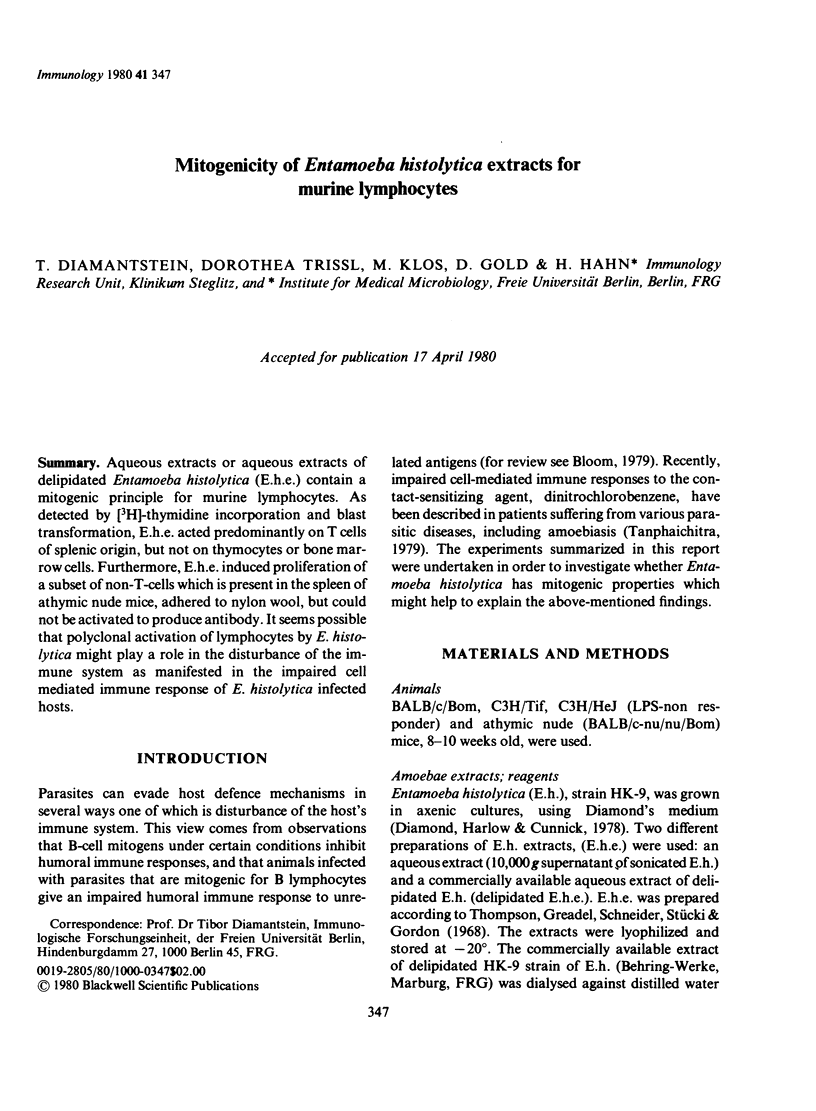
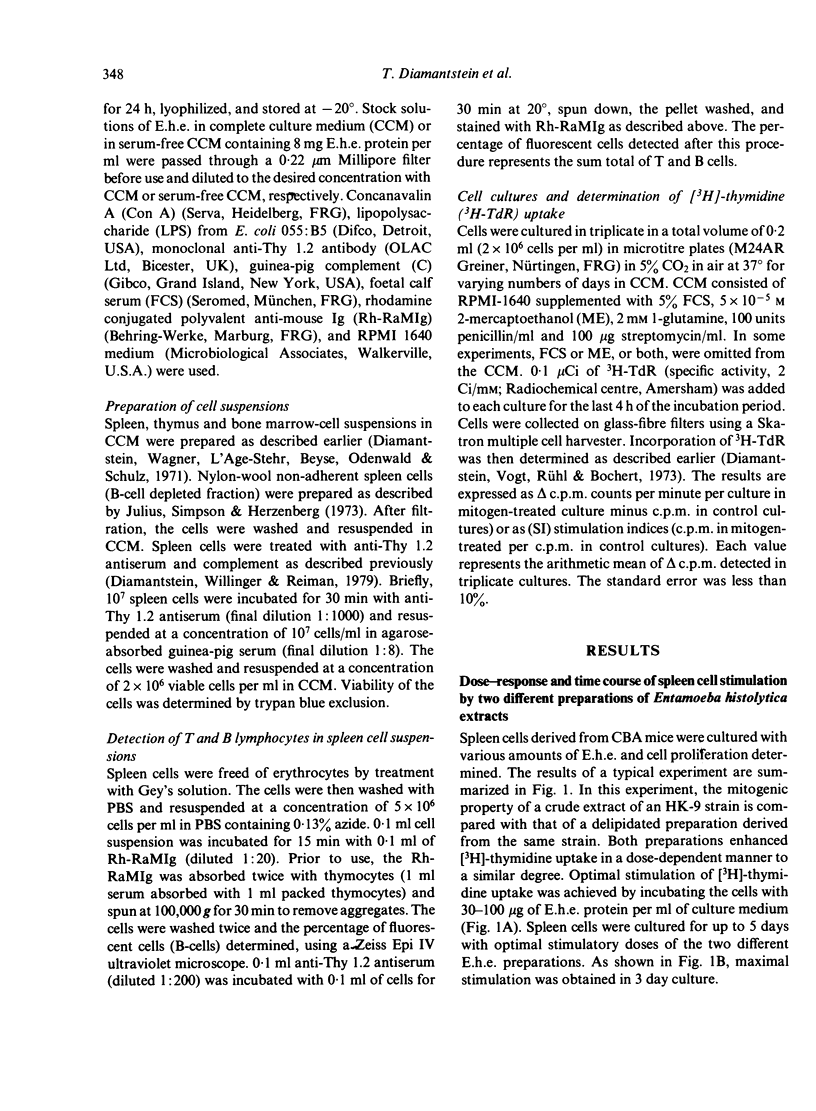

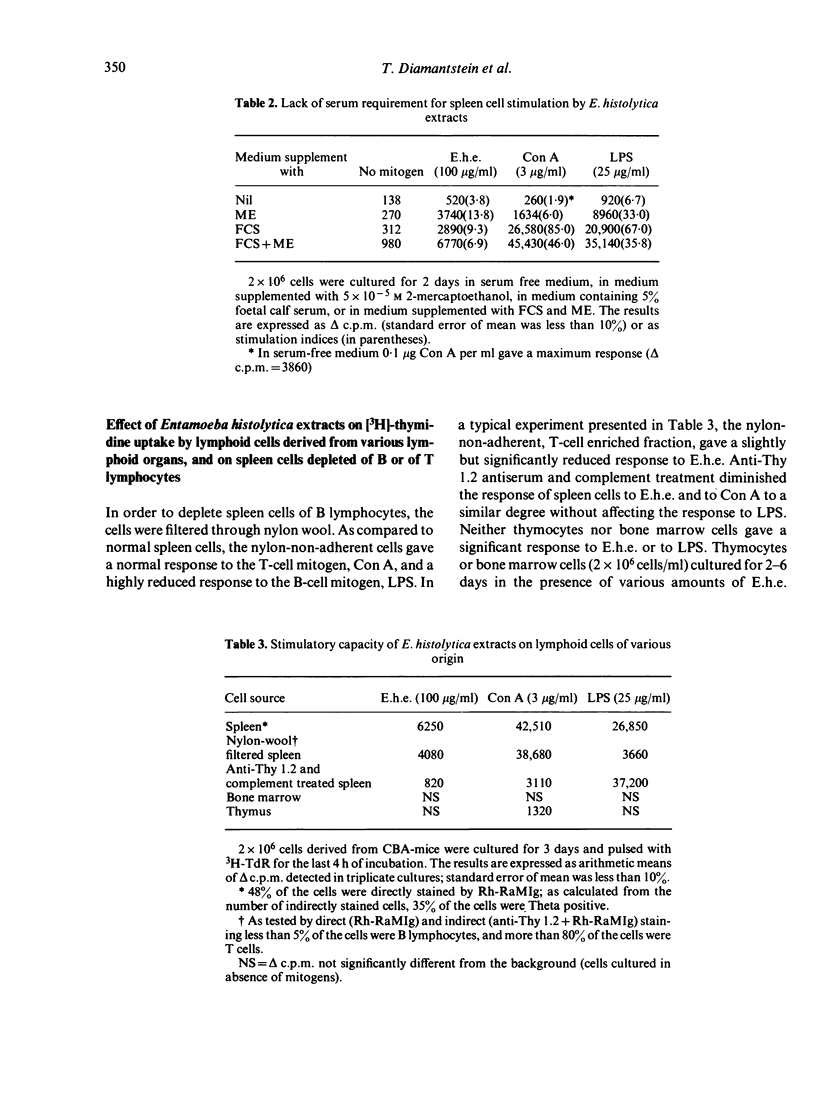
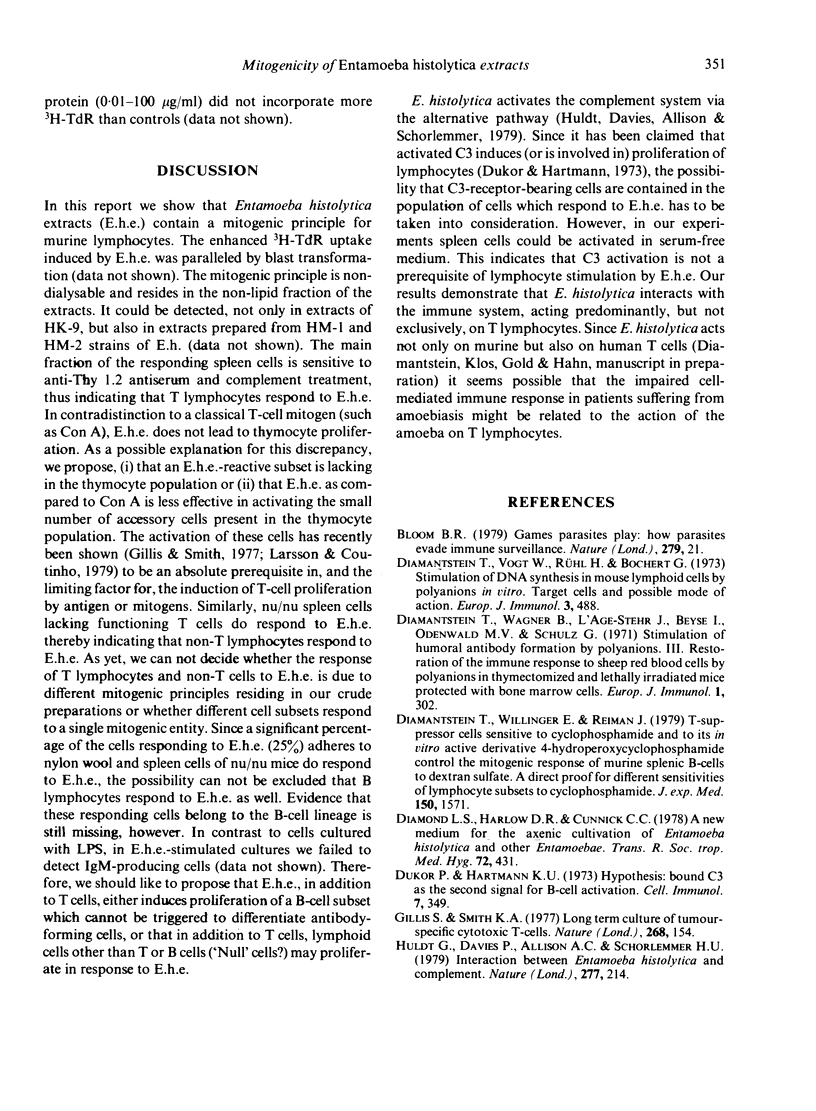
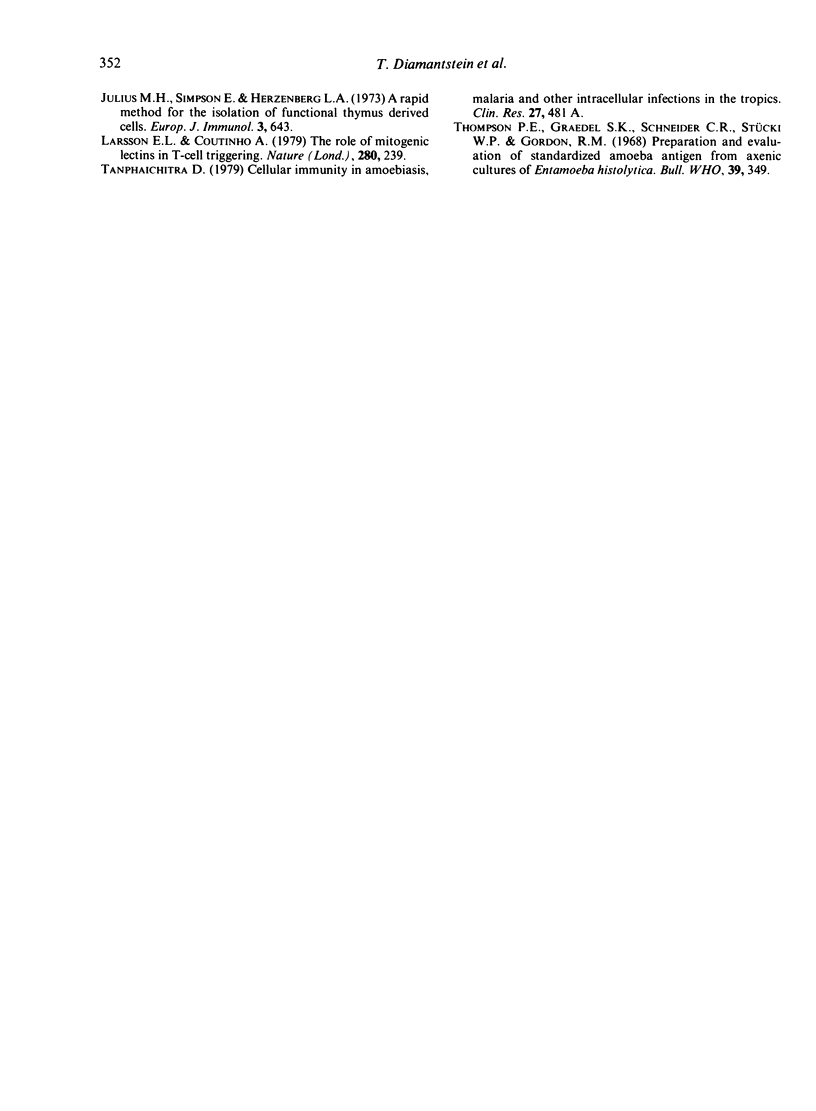
Selected References
These references are in PubMed. This may not be the complete list of references from this article.
- Diamantstein T., Vogt W., Rühl H., Bochert G. Stimulation of DNA synthesis in mouse lymphoid cells by polyanions in vitro. I. Target cells and possible mode of action. Eur J Immunol. 1973 Aug;3(8):488–493. doi: 10.1002/eji.1830030807. [DOI] [PubMed] [Google Scholar]
- Diamantstein T., Wagner B., L'Age-Stehr J., Beyse I., Odenwald M. V., Schultz G. Stimulation of humoral antibody formation by polyanions. 3. Restoration of the immune response to sheep red blood cells by polyanions in thymectomized and lethally irradiated mice protected with bone marrow cells. Eur J Immunol. 1971 Aug;1(4):302–304. doi: 10.1002/eji.1830010418. [DOI] [PubMed] [Google Scholar]
- Diamantstein T., Willinger E., Reiman J. T-suppressor cells sensitive to cyclophosphamide and to its in vitro active derivative 4-hydroperoxycyclophosphamide control the mitogenic response of murine splenic B cells to dextran sulfate. A direct proof for different sensitivities of lymphocyte subsets to cyclophosphamide. J Exp Med. 1979 Dec 1;150(6):1571–1576. doi: 10.1084/jem.150.6.1571. [DOI] [PMC free article] [PubMed] [Google Scholar]
- Diamond L. S., Harlow D. R., Cunnick C. C. A new medium for the axenic cultivation of Entamoeba histolytica and other Entamoeba. Trans R Soc Trop Med Hyg. 1978;72(4):431–432. doi: 10.1016/0035-9203(78)90144-x. [DOI] [PubMed] [Google Scholar]
- Dukor P., Hartmann K. U. Hypothesis. Bound C3 as the second signal for B-cell activation. Cell Immunol. 1973 Jun;7(3):349–356. doi: 10.1016/0008-8749(73)90199-8. [DOI] [PubMed] [Google Scholar]
- Gillis S., Smith K. A. Long term culture of tumour-specific cytotoxic T cells. Nature. 1977 Jul 14;268(5616):154–156. doi: 10.1038/268154a0. [DOI] [PubMed] [Google Scholar]
- Huldt G., Davies P., Allison A. C., Schorlemmer H. U. Interactions between Entamoeba histolytica and complement. Nature. 1979 Jan 18;277(5693):214–216. doi: 10.1038/277214a0. [DOI] [PubMed] [Google Scholar]
- Larsson E. L., Coutinho A. The role of mitogenic lectins in T-cell triggering. Nature. 1979 Jul 19;280(5719):239–241. doi: 10.1038/280239a0. [DOI] [PubMed] [Google Scholar]
- Thompson P. E., Graedel S. K., Schneider C. R., Stucki W. B., Gordon R. M. Preparation and evaluation of standardized amoeba antigen from axenic cultures of Entamoeba histolytica. Bull World Health Organ. 1968;39(3):349–365. [PMC free article] [PubMed] [Google Scholar]


